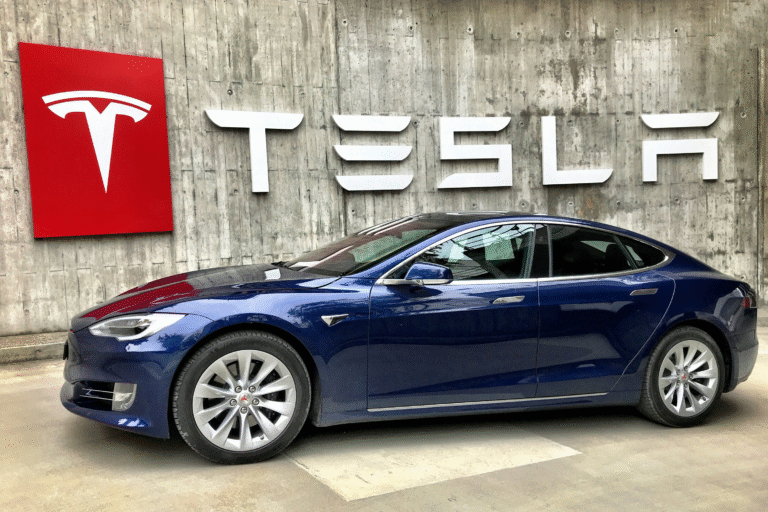
In a quiet corner of a bustling New York design studio, Sofia von Hauske is contemplating the soul of a machine. On one screen, a complex data dashboard for the food industry displays clean, intuitive analytics widgets. On another, whimsical AI-generated illustration, a young child rides a dragon through a candy-colored sky. For many, these two worlds—rigorous data visualization and fantastical AI art—would seem miles apart. For von Hauske, a Senior Product Digital Designer with a rare and potent command of both the physical and digital realms, they are two sides of the same revolutionary coin.
“We’ve always used tools to execute our vision,” she explains, her voice calm and measured, carrying a hint of the creative energy that defines her work. “A pencil, a mouse, a line of code—they did what we told them. AI is different. It’s the first tool that talks back. It has its own ideas.”
This single observation sits at the heart of one of the most significant transformations in the history of design. Artificial intelligence is no longer a futuristic concept discussed in academic papers; it is a tangible, powerful, and sometimes chaotic collaborator sitting on the desktop of every creative professional. As a designer who began her career in the tactile world of industrial design before migrating to the fluid landscape of digital products, von Hauske has a unique vantage point on this seismic shift. She sees AI not as a replacement for human creativity, but as a powerful, “playful ghost in the machine” that is forcing designers to evolve into something new: curators, conductors, and ethicists of a new creative age.
The Old World and the New: From Deterministic Tools to Generative Partners
To grasp the revolution, von Hauske argues, one must first understand the fundamental change in our relationship with our tools. “For my entire career, my tools were deterministic,” she says, gesturing toward a sleek 3D model of a consumer product on her screen. “Whether I was using Solidworks to model a physical object or Figma to lay out an app, my input had a predictable output. I was the sole author.”
This paradigm, which has defined design for centuries, is being completely upended by generative AI. When a designer writes a prompt for a tool like MidJourney or DALL-E, they are not issuing a command; they are initiating a dialogue. The AI responds with novel creations, synthesizing a visual language from a dataset of billions of images.
“The prompt becomes the new paintbrush,” von Hauske notes, a phrase she returns to often. “The designer’s core skill is shifting from pure execution to the art of the question. Your ability to articulate your intent, to guide and edit the AI’s output, is now paramount.” This transforms the designer from a solitary creator into a collaborator with an entity that has an almost infinite memory but no consciousness, no empathy, and no understanding of context. This collaboration is where both the peril and the promise lie.
The Digital Frontier: Designing Living, Breathing Interfaces
Nowhere is this new partnership more evident than in digital product design. According to von Hauske, AI’s impact is twofold: it is supercharging the design process while simultaneously changing the very nature of the products being created.
On the process side, AI is emerging as an indispensable assistant. “Imagine automating the creation of fifty wireframe variations, generating a complete design system from a simple style guide, or having an AI analyze user feedback to identify key emotional pain points,” she explains. “This isn’t about replacing the designer; it’s about liberating us from the monotonous tasks that consume our time, freeing us to focus on the strategic, human-centered work that truly creates value.”
But the more profound change is in the final product. We are entering an era of “living interfaces”—products that adapt, personalize, and evolve in real-time. Von Hauske’s recent work on Luna’s Bedtime Stories, an AI-powered app that generates personalized storybooks for children, serves as a powerful case study.
“With Luna, we didn’t design a single, static story,” she elaborates. “We designed a system, a set of rules and ethical guardrails. The AI, using Chat GPT and MidJourney, does the final creation, weaving the child’s name and likeness into a unique narrative and illustrations. The product isn’t the app itself, but the infinite stories it can tell.”
This represents a monumental shift. The designer is no longer just an architect of screens, but an architect of intelligent systems. However, von Hauske is quick to point out the immense responsibility that comes with this power. “If an AI is personalizing an experience, it’s operating on data. If that data is biased, the experience can become exclusionary or harmful. As designers, we are now on the front lines of algorithmic ethics. We have to be the humanists in the room, advocating for fairness, transparency, and the well-being of the user.”
The Physical Frontier: How AI is Reshaping Our Tangible World
While much of the media focus remains on AI’s digital creations, von Hauske’s background in industrial design gives her a keen insight into its equally transformative impact on the physical world. Here, AI-powered generative design is breaking down long-held barriers between imagination and manufacturability.
“In industrial design, you’re always constrained by physics, materials, and production methods,” she says. “Generative design flips that on its head.” Using this technology, a designer can input a set of goals and constraints—for example, designing a bicycle frame that must support a certain weight, be made of titanium, and be 3D-printable—and the AI can generate thousands of optimized design solutions.
The results are often alien and beautiful, resembling bone structures or plant life. They are forms that have been algorithmically perfected for performance, often far surpassing what a human designer, relying on established typologies, could envision. “The AI has no preconceived notion of what a bike frame should look like,” von Hauske notes. “It only knows the problem it needs to solve. It explores the entire solution space, not just the corners we’re familiar with.”
This repositions the industrial designer as a high-level strategist. Their role is to define the problem with absolute clarity and then to curate the AI’s output, selecting the design that best balances performance with the intangible, human elements of ergonomics and aesthetic appeal. It also forges a much tighter bond between design and manufacturing, enabling the on-demand production of highly complex, personalized objects like medical implants or performance athletic gear.
The Uniquely Human: Why a Designer’s Soul is Irreplaceable
In a world where an AI can generate a stunning user interface or a perfectly optimized chair in seconds, the ultimate question arises: What is the future role of the human designer?
Von Hauske leans forward, her passion for the subject evident. “This is what excites me most. AI handles the ‘how’ with incredible efficiency, which means our value is more concentrated than ever in the ‘why.’ The skills that an algorithm can’t replicate are now our superpowers.”
She breaks these irreplaceable human skills down into three core areas:
- Deep Empathy: “An AI can process a million data points on user clicks, but it can’t sit across from a person and understand the hesitation in their voice or the frustration in their eyes,” she insists. “That deep, intuitive empathy—the ability to connect with another human’s experience and identify their unarticulated needs—is the very foundation of meaningful design. AI can solve the problem you give it, but a great human designer can find the right problem to solve.”
- Contextual Awareness: AI models are trained on historical data. They have no understanding of a specific company’s business goals, the nuances of a shifting cultural landscape, or the competitive pressures of a market. “Our job is to be the great synthesizer,” von Hauske says. “We absorb all this complex, real-world context and translate it into a coherent design strategy. AI is a powerful instrument, but the human designer is the conductor who makes sure the entire orchestra is playing in harmony.”
- Narrative and Intentionality: Great design has a point of view. It tells a story. Von Hauske points to her own philosophy of designing for her “inner child”—a principle that infuses her work with playfulness and delight. “That’s an intentional narrative I bring to my work. It’s a creative constraint that guides my decisions. An AI doesn’t have a philosophy; it doesn’t have values. The soul, the personality, the story behind a product—that comes from us.”
As our conversation concludes, it’s clear that Sofia von Hauske does not fear the ghost in the machine. She is actively learning its language, challenging its assumptions, and guiding its immense power with a steady, human hand. The future she describes is not one of obsolescence, but of evolution. It’s a future where designers, freed from the drudgery of pixels and polygons, can ascend to a more strategic and meaningful role.
“The best designers of this new era will be the best collaborators,” she concludes. “They will be curious, critical thinkers who can artfully blend the computational power of AI with the irreplaceable spark of human empathy and intent.” It is in that delicate, dynamic partnership that the true future of design will be forged.











